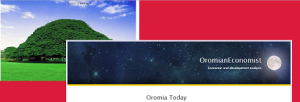I wasn’t always a good learner. I thought learning was all about the hours you put in. Then I discovered something that changed my life.
The famous Nobel Prize-winning physicist Richard Feynman understood the difference between “knowing something” and “knowing the name of something,” and it’s one of the most important reasons for his success.
Feynman stumbled upon a formula for learning that ensured he understood something better than everyone else.
It’s called the Feynman Technique and it will help you learn anything deeper, and faster. The topic, subject, or concept you want to learn doesn’t matter. Pick anything. The Feynman Technique works for everything. Best of all, it’s incredibly simple to implement.
The catch: It’s ridiculously humbling.
Not only is this a wonderful method of learning, but it’s also a window into a different way of thinking. Let me explain:
There are three steps to the Feynman Technique.
Step 1: Teach it to a child
Take out a blank sheet of paper and write the subject you want to learn at the top. Write out what you know about the subject as if you were teaching it to a child. Not your smart adult friend but rather an eight-year-old who has just enough vocabulary and attention span to understand basic concepts and relationships.
A lot of people tend to use complicated vocabulary and jargon to mask when they don’t understand something. The problem is we only fool ourselves because we don’t know that we don’t understand. In addition, using jargon conceals our misunderstanding from those around us.
When you write out an idea from start to finish in simple language that a child can understand (tip: use only the most common words), you force yourself to understand the concept at a deeper level and simplify relationships and connections between ideas. If you struggle, you have a clear understanding of where you have some gaps. That tension is good—it heralds an opportunity to learn.
Step 2: Review
In step one, you will inevitably encounter gaps in your knowledge where you’re forgetting something important, are not able to explain it, or simply have trouble connecting an important concept.
This is invaluable feedback because you’ve discovered the edge of your knowledge. Competence is knowing the limit of your abilities, and you’ve just identified one!
This is where the learning starts. Now you know where you got stuck, go back to the source material and re-learn it until you can explain it in basic terms.
Identifying the boundaries of your understanding also limits the mistakes you’re liable to make and increases your chance of success when applying knowledge.
Step 3: Organize and simplify
Now you have a set of hand-crafted notes. Review them to make sure you didn’t mistakenly borrow any of the jargon from the source material. Organize them into a simple story that flows.
Read them out loud. If the explanation isn’t simple or sounds confusing that’s a good indication that your understanding in that area still needs some work.
Step 4 (optional): Transmit
If you really want to be sure of your understanding, run it past someone (ideally who knows little of the subject—or find that 8-year-old!). The ultimate test of your knowledge is your capacity to convey it to another.









You must be logged in to post a comment.